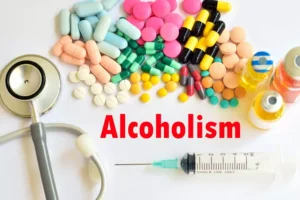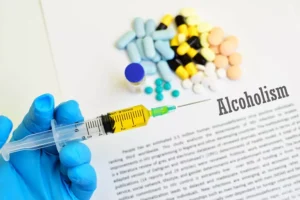
Indeed, a prominent harm reduction psychotherapist and researcher, Rothschild, argues that the harm reduction approach represents a “third wave of addiction treatment” which follows, and is replacing, the moral and disease models (Rothschild, 2015a). This paper presents a narrative review of the literature and a call for increased research attention on the development of empirically supported nonabstinence treatments for SUD to engage and treat more people with SUD. We define nonabstinence treatments as those without an explicit goal of abstinence from psychoactive substance use, including treatment aimed at achieving moderation, reductions in use, and/or reductions in substance-related harms. We first provide an overview of the development of abstinence and nonabstinence approaches within the historical context of SUD treatment in the U.S., followed by an evaluation of literature underlying the theoretical and empirical rationale for nonabstinence treatment approaches. Lastly, we review existing models of nonabstinence psychosocial treatment for SUD among adults, with a special focus on interventions for drug use, to identify gaps in the literature and directions for future research.
Abstinence violation effect
- Given the rapid growth in this area, we allocate a portion of this review to discussing initial evidence for genetic associations with relapse.
- Ultimately, individuals who are struggling with behavior change often find that making the initial change is not as difficult as maintaining behavior changes over time.
- The relationship between specific risk factors and drinking in this sample of individuals who received three unique treatments (CBT, MET, and TSF) is of particular interest to treatment providers and clinical researchers.
- In particular, these modifications fail to specify accurately the AVE’s occurrence and influence in the offense cycle.
For example, in this study self-value and resilience received high importance ratings, but these are not reflected in current models. https://ecosoberhouse.com/ We believe a theoretical framework based on the latest insights would be of added value to the field of relapse prevention and can inform future weight loss maintenance interventions. Ultimately, individuals who are struggling with behavior change often find that making the initial change is not as difficult as maintaining behavior changes over time. Many therapies (both behavioral and pharmacological) have been developed to help individuals cease or reduce addictive behaviors and it is critical to refine strategies for helping individuals maintain treatment goals.
Factors That Contribute To The Abstinence Violation Effect

There are no specific time frames within which a person navigates through the stages, and may also remain at stage for a long time before moving forwards or backwards (for example a person may remain in the stage of contemplation or preparation for years without moving on to action). Patterns of movement through the various stages are categorized as stable, progressive or unstable11. Although many developments over the last decade encourage confidence in the RP model, additional research is needed to test its predictions, limitations and applicability.
4. Current status of nonabstinence SUD treatment
Others high risk situations include physical states such as hunger, thirst, fatigue, testing personal control, responsivity to substance cues (craving). The RP model highlights the significance of covert antecedents such as lifestyle patterns craving in relapse. As the foregoing review suggests, validation of the reformulated RP model will likely progress slowly at first because researchers are only beginning to evaluate dynamic relapse processes. Currently, the dynamic model can be viewed as a hypothetical, theory-driven framework that awaits empirical evaluation. Testing the model’s components will require that researchers avail themselves of innovative assessment techniques (such as EMA) and pursue cross-disciplinary collaboration in order to integrate appropriate statistical methods.
- Explaining the interaction between relapse risk factors and post-treatment drinking using a dynamical analysis, such as catastrophe theory, may increase our ability to better target unique combinations of risk factors in clinical interventions.
- The harm reduction movement, and the wider shift toward addressing public health impacts of drug use, had both specific and diffuse effects on SUD treatment research.
- She hopes to continue investigating implicit and explicit measures of substance abuse in the future.
- By implementing certain strategies, people can develop resilience, self-compassion, and adaptive coping skills to counteract the effects of the AVE and maintain lifelong sobriety.
Overcoming the Abstinence Violation Effect:
- If you are worried that you might be headed for a relapse, you don’t have to wait until it happens to reach out for help.
- Marlatt’s work inspired the development of multiple nonabstinence treatment models, including harm reduction psychotherapy (Blume, 2012; Denning, 2000; Tatarsky, 2002).
- You may think that this time will be different, but if your drinking and drug use has gotten out of control in the past, it’s unlikely to be different this time.
- Limit violations were predictive of responses consistent with the AVE the following day, and greater distress about violations in turn predicted greater drinking 80.
- Unfortunately, there has been little empirical research evaluating this approach among individuals with DUD; evidence of effectiveness comes primarily from observational research.
If I asked you about your past drinking experiences, you’d likely recall the bonding moments or numbing relaxation rather than the drunk argument and frequent blackouts. Before you know it, you’re back in the old pattern—hangovers, drunk arguments, the endless obsession around the wine o’clock. There may be an internal conflict between resisting thoughts about drugs and compulsions to use them. There is a possibility that you might rationalize why you might not experience the same consequences if you continue to use. Rajiv’s unsuccessful attempts at abstinence lead to a low sense of self-confidence and a belief that he would not be able help himself (low perceived self- efficacy) setting up a vicious cycle. Considering the numerous developments related to RP over the last decade, empirical and clinical extensions of the RP model will undoubtedly continue to evolve.
Emerging topics in relapse and relapse prevention
- His therapist identified strategies to enhance his motivation, to help him engage in therapy, deal with craving, reducing social anxiety, assertiveness and beliefs and positive expectancies about alcohol use, and confidence or sense of self-efficacy in remaining abstinent.
- Even though certain models have better fit, as measured by BIC, they may not fit significantly better than comparison models.
- We also provide updated reviews of research areas that have seen notable growth in the last few years; in particular, the application of advanced statistical modeling techniques to large treatment outcome datasets and the development of mindfulness-based relapse prevention.
- This reaction, termed the Abstinence Violation Effect (AVE; 16), is considered more likely when one holds a dichotomous view of relapse and/or neglects to consider situational explanations for lapsing.
Given the abstinence focus of many SUD treatment centers, studies may need to recruit using community outreach, which can yield fewer participants compared to recruiting from treatment (Jaffee et al., 2009). However, this approach is consistent with the goal of increasing treatment utilization by reaching those who may not otherwise present to treatment. Alternatively, researchers who conduct trials in community-based treatment centers will need to obtain buy-in to test nonabstinence approaches, which may necessitate waiving facility policies regarding drug use during treatment – a significant hurdle. It is important to highlight that most of the studies cited above did not provide goal-matched treatment; thus, these outcomes generally reflect differences between individuals with abstinence vs. non-abstinence goals who participated in abstinence-based AUD treatment. Although withdrawal is usually viewed as a physiological process, recent theory emphasizes the importance of behavioral withdrawal processes 66. Current theory and research indicate that physiological components of drug withdrawal may be motivationally inert, with the core motivational constituent of withdrawal being negative affect 25,66.
The reformulated cognitive-behavioral model of relapse
Individuals with greater SUD severity tend to be most receptive to therapist input about goal selection (Sobell, Sobell, Bogardis, Leo, & Skinner, 1992). This suggests that treatment experiences and therapist input can influence participant goals over time, and there is value in engaging patients with non-abstinence goals in treatment. There has been little research on the goals of non-treatment-seeking individuals; however, research suggests that nonabstinence goals are common even among individuals presenting to SUD treatment. Among those seeking treatment for alcohol use disorder (AUD), studies with large samples have cited rates of nonabstinence goals ranging from 17% (Berglund et al., 2019) to 87% (Enggasser et al., 2015). In Europe, about half (44–46%) of individuals seeking treatment for AUD have non-abstinence goals (Haug & Schaub, abstinence violation effect 2016; Heather, Adamson, Raistrick, & Slegg, 2010). In the U.S., about 25% of patients seeking treatment for AUD endorsed nonabstinence goals in the early 2010s (Dunn & Strain, 2013), while more recent clinical trials have found between 82 and 91% of those seeking treatment for AUD prefer nonabstinence goals (Falk et al., 2019; Witkiewitz et al., 2019).

Problem orientation must also be addressed in addition to these steps, and the efficacy of PST increases when problem orientation is addressed in addition to the other steps25,26. As seen in Rajiv’s case illustration, internal (social anxiety, craving) and external cues (drinking partner, a favourite brand of drink) were identified as triggers for his craving. Subsequently inadequate coping and lack of assertiveness and low self-efficacy maintained his drinking. The following section presents a brief overview of some of the major approaches to managing addictive behaviours. An individual progresses through various stages of changes and the movement is influenced by several factors. Stages imply a readiness to change and therefore the TTM has been particularly relevant in the timing of interventions.

Although reducing practical barriers to treatment is essential, evidence suggests that these barriers do not fully account for low rates of treatment utilization. Instead, the literature indicates that most people with SUD do not want or need – or are not ready for – what the current treatment system is offering. Unfortunately, a single lapse can cause you to fall into a full relapse because of something called the abstinence violation effect (AVE). It is not necessarily a failure of self-control nor a permanent failure to abstain from using a substance of abuse.

Pas encore de commentaire
Vous pouvez être le premier à poster un commentaire.